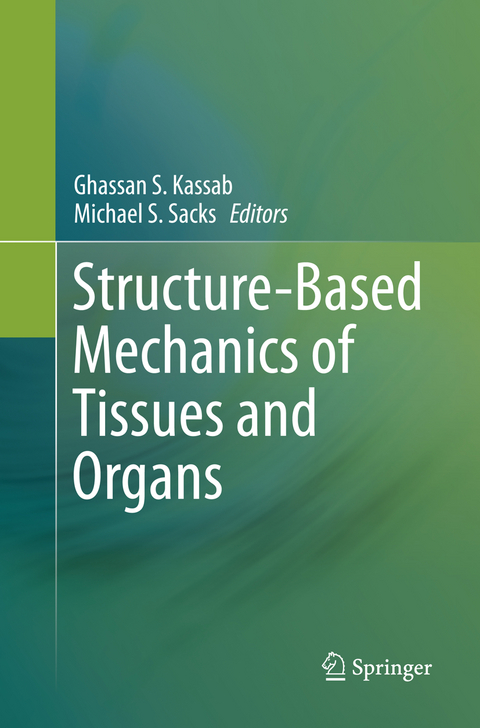
Structure-Based Mechanics of Tissues and Organs
Springer-Verlag New York Inc.
978-1-4939-7938-7 (ISBN)
This book also:
Provides a comprehensive view of tissue modeling across multiple systems
Broadens readers’ understanding of state-of-the-art computational modeling and optical measurements of tissue/cells structures
Describes in detail fiber scale properties such as orientation and crimp
Chapter 1 The Influence of Microstructure on Neural Tissue Mechanics.- Chapter 2 Modeling a Collagenous Tissues Using Distributed Fiber Orientations.- Chapter 3 Emergent Behaviors in Cell Mechanics.- Chapter 4 Histomechanical Modeling of the Wall of Abdominal Aortic Aneurysm.- Chapter 5 The Biomechanics of Fat: From Tissue to a Cell Scale.- Chapter 6 Glaucoma and Structure-Based Mechanics of the Lamina Cribrosa at Multiple Scales.- Chapter 7 From Stress-Strain Relations to Formulation of Growth and Remodeling Theories: A Historical Reflection on Microstructurally-Motivated Constitutive Relations.- Chapter 8 Relationship Between Structure and Mechanics for Membranous Tissues.- Chapter 9 Structure-Function Relations in the Coronary Vasculature.- Chapter 10 Biomechanical Basis of Myocardium/Vessel Interaction: Implications for Patho-Physiology and Therapy.- Chapter 11 Microstructure-Based Constitutive Models for Coronary Artery Adventitia.- Chapter 12 Structural-Based Models of Ventricular Myocardium.- Chapter 13 Structure-Based Constitutive Model of Coronary Media.- Chapter 14 Biomechanics of the Cornea and Sclera.- Chapter 15 Mechanical Modeling of Skin.- Chapter 16 Undesirable Anisotropy in a Discrete Fiber Bundle Model of Fibrous Tissues.- Chapter 17 Structural Models as Applied to Engineered Tissue Scaffolds.- Chapter 18 Finite Element Implementation of Structural Models.- Chapter 19 A Microvascular Model in Skeletal Muscle Fascia.- Chapter 20 Network Approaches to the Mechanical Failure of Soft Tissues: Implications for Disease and Tissue Engineering.
| Erscheinungsdatum | 28.08.2018 |
|---|---|
| Zusatzinfo | 98 Illustrations, color; 71 Illustrations, black and white; XXXIV, 469 p. 169 illus., 98 illus. in color. |
| Verlagsort | New York |
| Sprache | englisch |
| Maße | 155 x 235 mm |
| Themenwelt | Informatik ► Grafik / Design ► Digitale Bildverarbeitung |
| Mathematik / Informatik ► Informatik ► Theorie / Studium | |
| Informatik ► Weitere Themen ► Bioinformatik | |
| Medizin / Pharmazie ► Pharmazie | |
| Medizin / Pharmazie ► Physiotherapie / Ergotherapie ► Orthopädie | |
| Naturwissenschaften ► Biologie | |
| Technik ► Medizintechnik | |
| Schlagworte | Cell structures • Computational • Fiber scale properties • Modeling • Tissues |
| ISBN-10 | 1-4939-7938-8 / 1493979388 |
| ISBN-13 | 978-1-4939-7938-7 / 9781493979387 |
| Zustand | Neuware |
| Haben Sie eine Frage zum Produkt? |
aus dem Bereich


